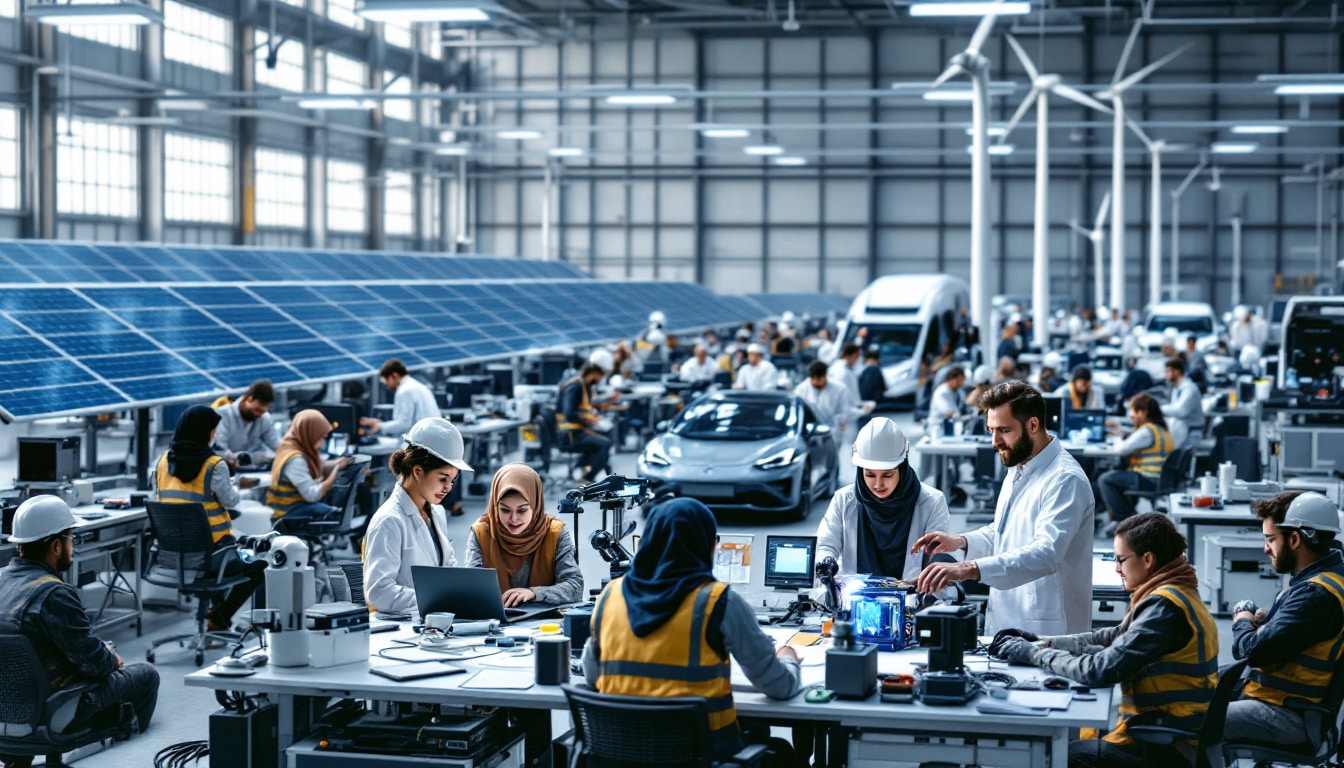Welcome to our digital universe where every detail matters.We use cookies and data to ensure the proper functioning of our services.Your online experience is at the heart of our priorities.
We monitor service interruptions and protect against spam, fraud, and abuse. In order to better understand how our services are used, we measure audience engagement and collect site statistics. If you choose to “Accept All”, we will develop and improve new services while measuring the effectiveness of advertisements. Furthermore, we offer personalized content and ads based on your settings and previous activities. On the other hand, if you prefer to “Reject All”, we will limit the use of cookies to non-personalized content and advertisements, based solely on what you are currently viewing and your general location.

Table des matières
ToggleTechnological innovations are transforming the silver economy
In a constantly evolving world, technological innovations play a crucial role in energizing the silver economy. These advances meet the specific needs of aging populations by offering tailored and effective solutions. For example, gerontechnologies, such as teleassistance devices and health tracking apps, significantly improve the quality of life for older individuals. At the recent symposium at Lingnan University, over 100 experts discussed the latest trends in gerontechnology, emphasizing the importance of innovation to stimulate the silver economy.
Economic opportunities linked to population aging
Population aging presents numerous economic opportunities that the world did not anticipate. According to a study by the IMF, a growing elderly population can stimulate various economic sectors, including healthcare, adapted housing, and leisure services. These sectors benefit from increased demand, thus creating new sources of income and jobs. In addition, seniors represent a loyal customer base with significant financial resources, encouraging companies to develop products and services specifically designed for them.
The impact of China on the global silver economy
China, with its aging population, plays a major role in the global silver economy. The country is actively committed to enhancing and expanding this economy by investing heavily in infrastructures suited for seniors. Initiatives such as the development of senior communities and the promotion of smart health technologies testify to this commitment. At the events of the Fujian provincial government, showcased on The Silver Business, it was highlighted that these initiatives not only improve the quality of life for older individuals but also contribute to economic growth by creating new markets and jobs.
The advantages of a growing silver economy according to the IMF
A growing silver economy presents several advantages, as highlighted by a study from the IMF. Firstly, it encourages innovation across various sectors, including healthcare, information technology, and financial services. Secondly, an aging population well integrated into the labor market can continue to contribute economically, thus reducing the potential impact of rising pensions on public finances. Finally, seniors consume differently, fostering the development of specific market niches and diversifying commercial offerings.
How are companies adapting to the silver economy?
Companies are adapting their strategies to take advantage of the silver economy by developing products and services specifically designed for seniors. This includes offers in healthcare, such as innovative medical devices and teleconsultation services, as well as mobility and adapted housing solutions. Moreover, the tourism sector is shifting towards offers more suited to the needs of older individuals, proposing more comfortable stays and adapted activities. This adaptation is essential to meet a growing and diverse demand while ensuring the sustainability and growth of businesses in a constantly evolving market.
What role does training play in the development of new productive forces?
Training is essential for the development of new productive forces within the silver economy. By investing in the training of older workers, companies can benefit from the experience and know-how of seniors while helping them adapt to new technologies and working methods. Continuing education and professional retraining programs allow older individuals to remain active and productive, thus contributing to a more dynamic and resilient economy. Furthermore, training promotes better intergenerational integration within teams, thereby enriching companies’ human capital.
The challenges to overcome to boost the silver economy
Despite numerous opportunities, the silver economy also faces several challenges. One of the main obstacles is the need to develop adequate infrastructures to meet the growing needs of seniors. This includes not only suitable housing and transport but also accessible health and wellness services. Additionally, it is crucial to overcome societal prejudices related to aging by valuing the contributions of seniors and promoting their inclusion in all aspects of economic and social life. Finally, the issue of financing pensions and long-term care remains a major challenge requiring innovative and sustainable solutions.
Public policies supporting the silver economy
Public policies play a decisive role in supporting and developing the silver economy. Governments can encourage innovation by offering tax incentives to companies that develop products and services for seniors. Moreover, the establishment of training and professional retraining programs helps maintain an active and skilled workforce. Public health policies, by integrating technological advancements and improving access to care for older individuals, are also crucial. Finally, initiatives aimed at promoting social inclusion and combating ageism are essential to create a favorable environment for a thriving silver economy.
Successful examples of silver economy development
Several initiatives around the world illustrate the potential of the silver economy when well-supported. For example, in China, projects for senior communities integrating advanced technologies have significantly improved the quality of life for residents while stimulating the local economy. Similarly, in Europe, telemedicine and home care programs have reduced healthcare costs and improved access to care for older individuals. These examples demonstrate that a proactive and innovative approach can transform the challenges of aging into opportunities for economic growth and social development.
The future of the silver economy: trends and perspectives
The future of the silver economy looks promising, with several emerging trends shaping its development. One of the main trends is the increasing integration of information and communication technologies, which facilitate access to health services, online commerce, and social activities for seniors. Furthermore, the rise of startups specialized in solutions for older individuals is driving innovation and diversification of offerings. Additionally, a growing awareness of the issues related to population aging is pushing businesses and governments to invest more in sustainable and inclusive initiatives. These perspectives promise a dynamic and resilient silver economy capable of addressing future challenges while offering opportunities for economic and social development.
Merci @Lopinion_fr et Bravo également à Alogia et @VACbyC2S (coucou @Kelso3d 😉) #bienviellir #ehpad #seniors #silvereco #merci https://t.co/yCMhnlLfFF
— AnSo (@AnSo_de_Geil) November 17, 2016








